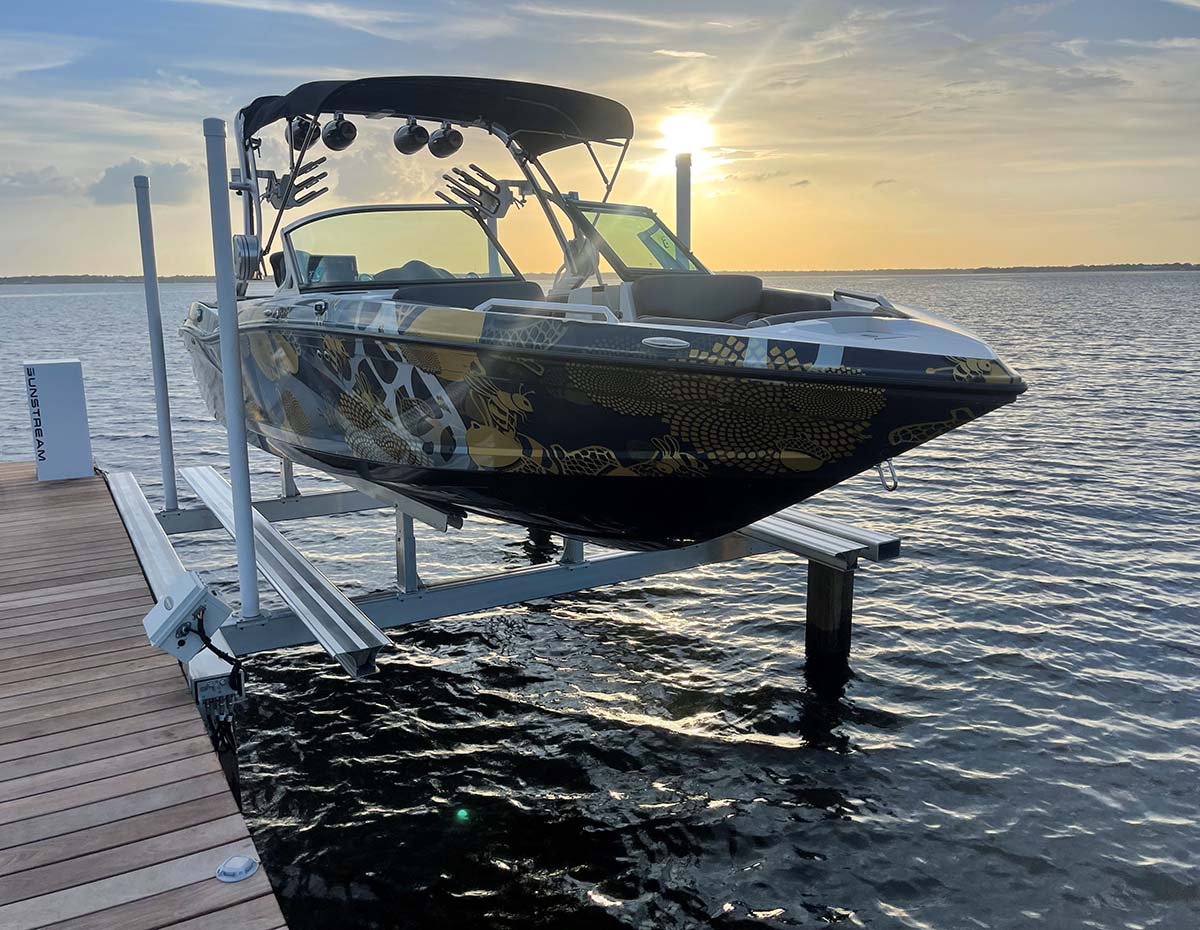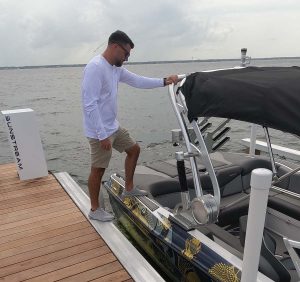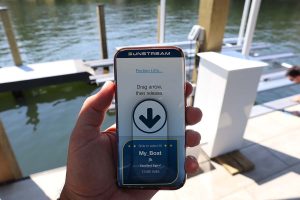
Products that Meet the Needs of Modern Marinas
Published on November 9, 2023At one time, in-slip boat lifts and cement docks were new products to the marine industry. Both promised to offer better care for boats—one by lifting boats away from the damaging effects of water and the other by providing a more stable place to tie up. These innovations were good news to marinas, but today these products are commonplace. However, Sunstream and Marinetek are making sure their lifts and docks continue to improve and have introduced the next generation of both with improvements that may have seemed impossible just a few years ago.
Boat Lift Reimagined
After four years in development, Sunstream launched its Helix-P Boat Lift in late summer, promising a lift like no other on the market and they may have met that lofty goal. Focusing on speed, ease of access, and invisible lines, the new lift is catching the eye of boaters. But this lift goes beyond, offering benefits to contractors and marina operators as well.
The idea for the Helix-P, and many of Sunstream’s other products, came from Ken Hey, CEO and founder of Sunstream. “We’re good at creating products that everybody loves but nobody asked for. So many companies look at competitors and make a product that’s just slightly better. We only look to our customers. We listen to what they want and what will make their boating experience better,” Hey said.

The Helix-P moves at the speed of a garage door or 12 times faster than a standard lift enabling a launch in as little as 15 seconds. The Sunstream Power System (SPS™) allows for up to two different hydraulic DC power packs of 6 or 12 hp, enabling power to increase up to 24 hp.
For aesthetics and safety, there are no visible motors, electrical work, or gearboxes and the pilings are low with no side beams. There is no obstructed view and less equipment that can be damaged or pose a threat to curious kids.
To further appeal to boaters, the lift can be run through a smartphone app that has no limit to how many people can use it. The app gives the operator the ability to accelerate, decelerate, and bring the lift to predetermined stops making it customized to the dock. For operators who don’t want yet another phone app, the lifts can also be operated through a fob or the control box.
The boxes are checked for what appeals to boaters– fast, accessible, and invisible, with the added convenience of operating the lift away from the dock.
Contractors have shown interest in what the lift does not have. Helix-P can be plugged into an extension cord, with 6A of 110V power, and does not require 220V power mounted on the lift or routed underwater. That means there is no need to hire an electrician, saving significant time and cost on any lift project. A Helix-P can be installed in one day. Hey pointed out, “Some jobs need 40 amps per lift. You could have thousands of amps with millions of dollars of wiring for the lifts at a marina.”
Another bonus is that Helix-P lifts have a smaller footprint. The lift can be installed with as little as a 5-inch gap between the dock and the boat meaning more slips can be added in less space—an average of 12% more. A single hydraulic motor that drives a single spindle is attached to the pier while the rest of the power system sits on land in a “pod.” Each pod has 4 batteries, a hydraulic reservoir, 2 pumps, and a charger. Two high-pressure hoses run up to 125 feet under the dock and can service up to 10 boats.
More lifts in less space mean marinas can boost revenue, and lowered installation costs mean using Helix-P lifts can be cost-effective. That’s a plus from a marina perspective. Another benefit to marinas is that the motors on the lift are submersible. Where motors previously had to be removed before the threat of a storm and high water, that job is eliminated. Less work also comes for dredging projects as there are no wires to remove from the seabed before a dredge gets to work.

Keeping in mind those locations where power is limited, or like in Hey’s back yard, non-existent, the Helix has a DC battery that requires no maintenance and only needs to be charged every 25 cycles. There’s also an option to charge those batteries with solar power bringing a green aspect to the system that is topped off by the use of environmentally friendly hydraulic fluid.
If the product’s recent unveiling at IBEX is any indication, the Sunstream Helix-P will be appearing soon in marinas across the country. “IBEX was a feeding frenzy. We knew we had something that appealed to boaters, but we didn’t realize the many benefits the lift could provide to contractors and marinas. That’s a bonus. We’re doing this to make boating better and get and keep people in the sport. We’ll always be innovating,” Hey said.
| Categories | |
| Tags |





